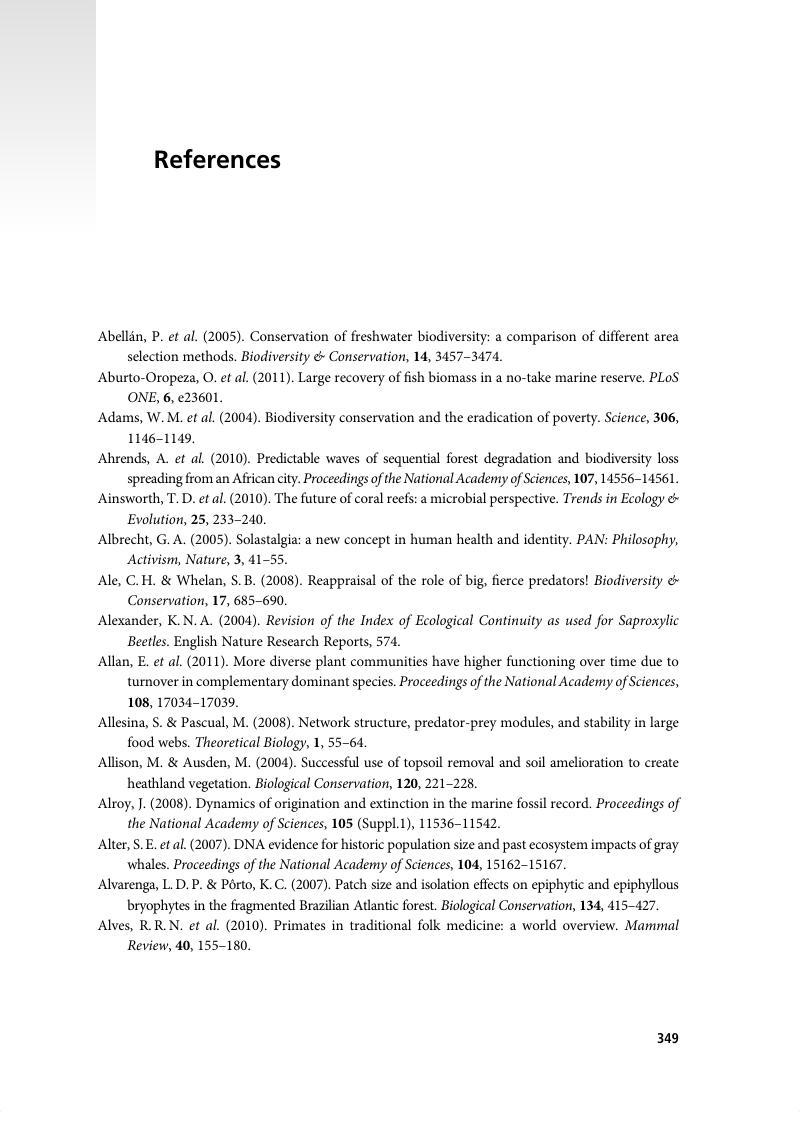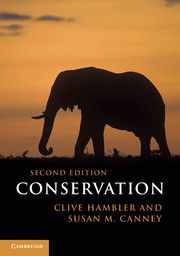Book contents
- Frontmatter
- Contents
- Preface to the Second Edition
- 1 Introduction to conservation
- 2 Threats to biodiversity
- 3 Evaluation of priorities for species and habitats
- 4 Monitoring and Environmental Impact Assessment
- 5 Management of natural and fragmented habitats
- 6 Management of species
- 7 Sustainable use, semi-natural cultural landscapes and the matrix
- 8 Restoration and offsetting
- 9 Environmental policy
- References
- Index to species names
- Index
- Plate section
- References
References
Published online by Cambridge University Press: 05 February 2013
- Frontmatter
- Contents
- Preface to the Second Edition
- 1 Introduction to conservation
- 2 Threats to biodiversity
- 3 Evaluation of priorities for species and habitats
- 4 Monitoring and Environmental Impact Assessment
- 5 Management of natural and fragmented habitats
- 6 Management of species
- 7 Sustainable use, semi-natural cultural landscapes and the matrix
- 8 Restoration and offsetting
- 9 Environmental policy
- References
- Index to species names
- Index
- Plate section
- References
Summary

- Type
- Chapter
- Information
- Conservation , pp. 349 - 394Publisher: Cambridge University PressPrint publication year: 2013



